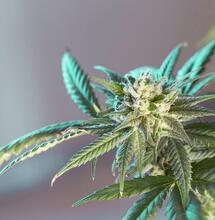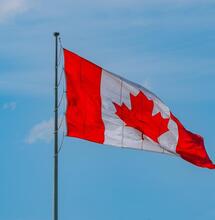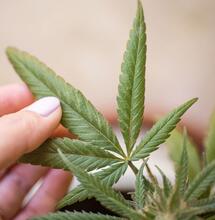Cannabis in Canada
_11zon.png)
Cannabis has come a long way to being accepted since its inception. A few years back, it was impossible to find people using cannabis and its related products freely because of the legal implications. However, a lot has happened over time as the plant became more acknowledged for its benefits and positive impacts, not to mention the potential for revenue streaming. Therefore, it is not surprising that laws have been changed at many places to accommodate the unrestricted use of cannabis.
However, despite the steps having been made generally, a few hurdles still need to be covered. The good news is that it is all work in progress. One other thing to note is that the legalization process differs from one country to the next, and in some cases, even within the same country, there are legal differences in cannabis use based on the state. This article sheds more light on the legalization of cannabis in Canada. How far has it come, and what happened to get to its present status? For answers to these and more questions, keep reading to uncover more interesting details.
Understanding the Cannabis Act in Canada
Before rushing to buy Cannabis Shatter anywhere in Canada, it helps to know the guidelines in place. Just because the product is acceptable does not mean that it is on a free-for-all basis. Ignorance is not an excuse, and you could easily find yourself on the wrong side of the law for failing to adhere to specific regulations. The cannabis act stipulates the use, possession, sale, and production of cannabis under tight legal frameworks. This means that one cannot operate as they think just because they believe they are legally allowed to. The Act aims to achieve several things, namely:
- To keep profits out of criminals pockets
- To keep cannabis away from the youth
- To protect public safety and health by allowing only adults to access cannabis legally
Definition of Legal Cannabis
The legal definition of cannabis varies from one country to another. In Canada, it simply means that adults 18 years and above within provincial and territorial boundaries can legally do the following:
- Have not more than 30 grams of legal cannabis in dry/equivalent form in public
- Share not more than 30 grams of legal cannabis with fellow adults
- Buy cannabis or its product(cannabis oil) from licensed vendors located in the provinces and territories without a regulated retail framework. They can also purchase the same from online stores licensed to be producers by the federal government.
- Grow cannabis plants(A maximum of 4 plants) from certified and licensed seeds as long as the cannabis plant is for personal use and is grown in residential environments.
- Make/cook cannabis foods and drinks at home as long as the organic solvents are not created concentrated products.
All the above-mentioned legal restrictions applied as of 2018. However, by 2019, the sale of cannabis edibles and concentrates became acceptable and legal.
_11zon.png)
Are There Any Limits of Possession
Well, cannabis is legal but not available without some measure of control. Most of the cannabis possession rules in the Act are based on dried cannabis. However, equivalents were also created for related products. It is essential to understand the equivalents to dried cannabis to know when you are within the possession limit already described above. This way, you are likely to get into trouble with law enforcers. Popular equivalents for one gram of dried cannabis are as follows:
- 1 gram dried cannabis equals 5 grams fresh cannabis
- One gram dried cannabis equals 15 grams of edible product
- A gram of dried cannabis equals 70 grams of liquid product
- 1 gram of dried cannabis equals 0.25 grams of concentrates both in liquid and solid form
- One gram of cannabis equals one cannabis plant seed
What Does the Law Say About Medical Cannabis in Canada?
As long as the person using cannabis can prove that they are authorized to do so, they are legally allowed to use it. The regime requires that a healthcare provider permits such use for patients who need it.
Cannabis Legalization and the Youth
Canada takes care of its youth as far as cannabis access, and use is concerned. It does so by ensuring that age restrictions and other measures are put in place to control the use and access of any cannabis products to underage youths. Some of the rules and regulations also cover the promotion of cannabis. It is essential to understand these aspects, especially if you intend to be a vendor or investor in this sector.
_11zon.png)
When Age Plays a Role
No vendor is allowed to sell cannabis or its products to a youth aged 18 years or below. Failure to adhere to this restriction attracts two penalties with a maximum of 14 years jail term. The criminal offenses associated with selling cannabis to underage youth are:
- Selling or giving cannabis to youth
- Using a youth to commit a cannabis-related offense
Rules on Promotion and Incitement
The Canadian cannabis act helps to discourage the use of cannabis by the youth in different ways through its restrictions on promotion. This include:
- Discouraging the sale of products that are appealing to the youth
- Prohibiting the labeling and packaging of cannabis in a way that appeals to the youth
- Prohibiting the sale of cannabis and its products through vending machines or s4elf service displays.
- Prohibiting the promotion of cannabis in an environment where youths can easily see it unless it is entirely unavoidable
To make sure that the restrictions are stern enough, violating this prohibition could attract sentencing of a jail term of up to three years or fines to the tune of $5 million.
What Does the Act Say About Public Health and Safety Protection?
Well, the Canadian cannabis act protects the youth and is mindful of the general public's health. It has put in place strict regulations to protect the interest of both cannabis users and non-users publicly. Besides that, there are measures to educate the public about potential risks that could result from the use of cannabis, if any. The idea is to ensure everyone takes charge of their wellbeing if they decide to indulge in cannabis use.
_11zon.png)
Regulation
One of the ways the Canadian cannabis act protects its people's public health and safety is through strict regulation. This is a shared responsibility between the federal, provincial, and territorial governments whose mandate is to ensure a regulation system in the cannabis sector. The federal government, for instance, plays the following roles:
- Enforcing strict regulations for cannabis growers and manufacturers
- Ensuring industry-wide rules and regulations that include:
- The cannabis products for sale
- Labeling and packaging requirements
- Potency and service sizes standardization
- Restrictions of ingredient use
- Production practices
- Tracking cannabis from seed to final products to avoid illegal markets
- Restricting promotional activities
Besides what the federal government does, provincial and territorial governments also have a role in protecting public health and safety. Their roles include:
- Increasing the minimum age of cannabis access in their territories and provinces(not lowering it)
- Lowering the limit of personal cannabis possession in their areas of jurisdiction
- Coming up with new rules of growing cannabis at home, such as reducing the number of plants allowed per household
- Restricting the places where adults are allowed to consume cannabis, i.e., away from public spaces such as buses and parks
Public Education
Besides putting strict regulations in place to safeguard the safety and health of its citizens, the government also legally engages in educational programs to help sensitize its users about cannabis. This is best demonstrated in the over $46 million that the government has set aside for this purpose, with the primary being to sensitize the youth on the impact and health/safety effects of cannabis.
The Law on Minimizing Criminal Activities Around Cannabis
The legalization of cannabis in Canada encompasses many things, including reducing the criminal activities around it. For example, according to statistics in 2017, most of the offenses related to cannabis were majorly due to possession. Eighty percent of the cases were around this. As such, the legalization of cannabis possession by adults has since seen many issues dropped, thereby unburdening the justice system of petty offenses.
Criminal Penalties Aspect
Despite having the law recognize and allow adults to have cannabis, anyone that goes against the set regulations is liable for punishment. The government ensures that strict penalties depend on the offense. The different crimes are stipulated in the cannabis act and could be as harsh as getting a 14-year jail term of paying fines in millions of dollars. The violations range from distribution, possession, youth involvement, and even border offenses. Users need to understand both regulations, offenses, and penalties to avoid any wrongdoing.
Final Thoughts
Cannabis may be legal in Canada, but it is still heavily guided by strict stipulations and regulations. Therefore, it is essential to understand what is at stake. Remember that ignorance is not an excuse, and once you violate the rules, you are liable for prosecution and judgment.











